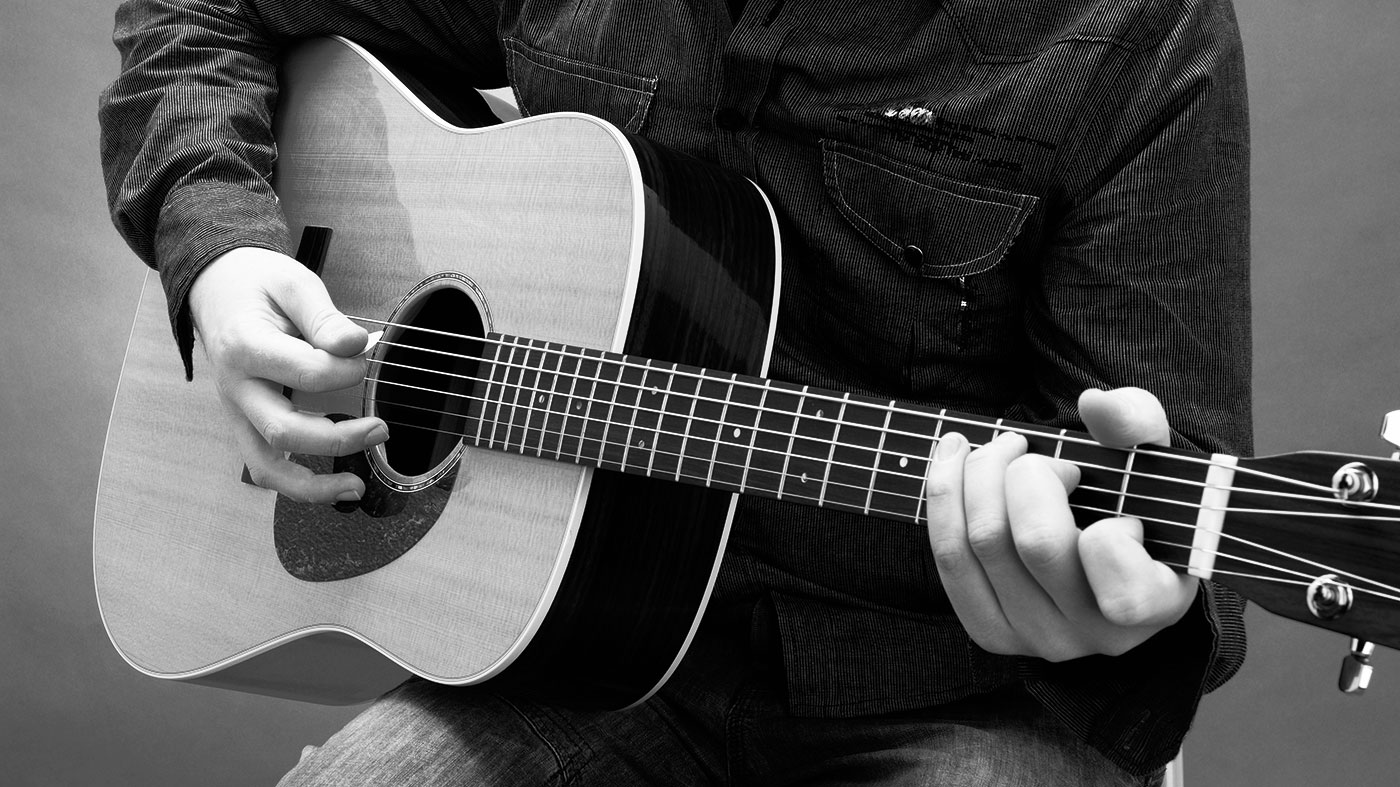
How many people reading this right now, can, hand-on-heart really explain what they’re doing when they make music? It might be the case that you’re an established artist with several albums, tours and hefty critical acclaim under your belt, but when it comes down to the rudiments of theory, you might find yourself at a loss to articulate how you slot your musical elements together. You might think it just feels ‘right’ when you hit upon a chord sequence, or melody that works. But why does it work? What makes music operate how it does?
Are we saying here that you need a formal theoretical knowledge? Absolutely not. In our view, music-making really should be more of an intuitive process, and several of the best songs in the history of popular music have been birthed purely through unstudied trial and error. But, to save your own time, and to get a clearer perspective on the mechanics of sound, songwriting, track-building and just why things work the way they do in music - picking up some music theory can go a long, long way.
For some, trying to find a way into the iceberg of music theory can be a daunting prospect. While many educators can quite quickly over-complicate matters by going too deep, too quick, our aim is to gradually deconstruct the elements of music theory that will demonstrably make your music better.
So, with that principle in mind, we’re going to begin in this first instalment by shining a light on the three core pillars of music theory.
The three pillars
The three pillars of music theory
Before any journey begins, it’s a good idea to have a top-down map of just where you’re going. And, for your first steps onto the branching pathways of music theory, it’s important to visualise three central pillars. These are:
- Melody
- Harmony
- Rhythm

Melody
What is melody?
The first of these pillars, melody, is - we’d argue - the most vital. After all it’s the element that remains in listeners’ heads, and the tune that they'll whistle on their way to work. It’s therefore been essential to the success of all pop music, ever.
When we talk about melody in this pillar-like context, we’re talking generally about combinations of notes which, when played/sang in rising and falling structures, will stand at the front and centre of your track, or might support the main melody as a counter-melody.
Think of some of the biggest ear-worms in pop: Lady Gaga’s Just Dance, ABBA’s Mamma Mia, Outkast’s Hey Ya, and… well, the list goes on. What you really go-to, when you think of these songs is, what we call, the topline melody. When was the last time you heard someone humming the underlying chord sequence or beatboxing the rhythm of a pop hit?
All these songs share excellently constructed topline melodies, these are (often) the lead vocal melodies that are designed to be those viral, can’t-get-it-out-of-my-head hooks that make you want to return to the song and hear it again. Melodies don’t have to be just sung however, melodies refer to any structured notational movement in your piece of music, and can be played on any instrument.
Think of the sweet, seductive riff of Sweet Child O’ Mine by Guns N' Roses, or the stabby, austere synth part of New Order’s Blue Monday. Basically, if you can whistle it, you can think of it as a melody.
Repetition is key for melodies to get stuck within the listener’s heads, as well as underlining their importance to the composition. We’ll look at melody in greater detail in our next instalment
Harmony
What is harmony?
The second of these pillars, harmony relates to the foundations on which your melodies are built, as well as the overall structure and dynamic journey of your track. Chords and how they interlink are essential concepts to grasp when it comes to harmony.
Learning about harmony can reveal how various linked chords - or keys - relate to each other. This is why a bridge might naturally sound like it leads back into a chorus, or how you can make your chorus feel like it arises out of a calmer verse.
So, what is a chord anyway? It essentially consists of three or more notes which ring at the same time. The lowest note on in the chord is (typically) the one which determines the overall letter of a chord. So, in an E minor for example, the bass note of that chord (on a guitar, this would be an open E string) defines the starting point of the chord, while the higher notes add further weight and augmentation to that foundation.
How the various major and minor chords relate with each other is crucial to becoming a better songwriter and track-builder. We’ll be exploring chords, and harmonic interplay in forensic detail over the coming weeks.
Rhythm
What is rhythm?
The third core component we need to get a lock on is rhythm, which (as its name implies) relates to the beat as well as the pace and flow of a track. It stands to reason that drums and time signatures are important, but in a composition-context it dictates the groove and strumming pattern you might play your guitar, the amount of keys you hit on your keyboard/synth, the momentum of a bass-line or the intensity of the delivery of your lyrics/top-line.
While basic rhythm is typically the pulse defined by the drum beat or click-track (if you’re working in the DAW or for live work), it’s also a concept that helps us understand the fundamental principle that your track is an //event// that’s operating within a fixed time-limit at a set pace.
While we’ve mentioned various sections supporting and paving the way to upcoming sections in relation to harmony, it’s also really important when it comes to rhythm. Having a chorus that speeds up, or slows down for example, or a resigned lyrical delivery that contrasts a faster-paced instrumental arrangement (see: Billie Eilish) are both rhythmic considerations, as well as harmony.
Sometimes a rhythm is quite overt, and illustrated by a pounding drum machine or a drummer pummelling a drum-kit, but other times the rhythm is dictated by the speed at which chords transition, or how a vocal or top-line melody completes its note-cycle. While we’re in danger of getting too complex here, we’ll pull back at this stage and simply re-iterate that rhythm pertains to time and speed - both of which heavily dictate your entire approach to songwriting.
In our next instalment, we’ll dig deeper into the first pillar of music theory - melody, and explore some examples of melodies that have traditionally worked extremely well, and how you can build more effective melodies yourself.







